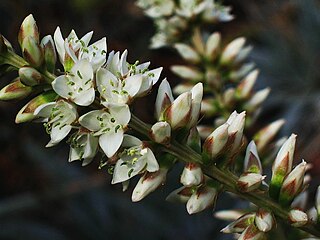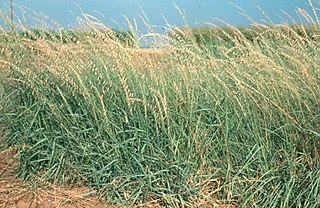
Hernán Cortés de Monroy y Pizarro Altamirano, 1st Marquess of the Valley of Oaxaca was a Spanish conquistador who led an expedition that caused the fall of the Aztec Empire and brought large portions of what is now mainland Mexico under the rule of the King of Castile in the early 16th century. Cortés was part of the generation of Spanish explorers and conquistadors who began the first phase of the Spanish colonization of the Americas.

Plumeria, also known as frangipani, is a genus of flowering plants in the subfamily Rauvolfioideae, of the family Apocynaceae. Most species are deciduous shrubs or small trees. The species are native to the Neotropical realm, but are often grown as cosmopolitan ornamentals in tropical regions, especially in Hawaii, as well as hot desert climates in the Arabian Peninsula with proper irrigation.

Zanthoxylum is a genus of about 250 species of deciduous and evergreen trees, shrubs and climbers in the family Rutaceae that are native to warm temperate and subtropical areas worldwide. It is the type genus of the tribe Zanthoxyleae in the subfamily Rutoideae. Several of the species have yellow heartwood, to which their generic name alludes. Several species are cultivated for their use as spices, notably including Sichuan pepper.
Bernardia is a plant genus of the family Euphorbiaceae first described for modern science as a genus in 1754. It is native to North and South America, as well as the West Indies.

Hechtia is a genus of plants in the family Bromeliaceae, and is the sole genus of the subfamily Hechtioideae, containing 75 species. Its species are native to Mexico, Central America, and Texas.

Gymnanthes is a genus of flowering plants in the spurge family, Euphorbiaceae, first described as a genus in 1788. It is found primarily in the warmer parts of the Western Hemisphere, but with some species in central Africa and southwestern Southeast Asia.

Bouteloua is a genus of plants in the grass family. Members of the genus are commonly known as grama grass.

Garrya is a genus of flowering plants in the family Garryaceae native to Mexico, the western United States, Central America and the Greater Antilles. Common names include silk tassel and tassel bush.
Alonso de Zuazo was a Spanish lawyer and colonial judge and governor in New Spain and in Santo Domingo. He served in New Spain during the period of Hernán Cortés's government and before the appointment of the first viceroy. He was a member of all of the various triumvirates that governed the colony between October 12, 1524 and May 23, 1525, in the absence of Cortés.

Koanophyllon is a genus of plants in the family Asteraceae. They are perennials and shrubs and are native to South America, Central America, the West Indies, Mexico, with a few species range extending into the United States. The flowers are white to pinkish.

Waterhouse's leaf-nosed bat is a species of big-eared bat in the family Phyllostomidae. It is found in the Greater Antilles in the Cayman Islands, Cuba, Hispaniola and Jamaica, as well as Mexico south to Guatemala.

Lysiloma is a genus of flowering plants belonging to the family Fabaceae.
The mammalian order Pilosa, which includes the sloths and anteaters, includes various species from the Caribbean region. Many species of sloths are known from the Greater Antilles, all of which became extinct over the last millennia, but some sloths and anteaters survive on islands closer to the mainland.

Schiedeella is a genus of flowering plants from the orchid family, Orchidaceae. It is native to the Western Hemisphere: Mexico, the West Indies and Central America, with one species (S. arizonica) in the southwestern United States.
Modisimus is a genus of cellar spiders that was first described by Eugène Louis Simon in 1893.
Coccothrinax spirituana is a fan palm which is palm endemic to central Cuba. Populations have been found in Sancti Spíritus and Ciego de Ávila provinces. Its leaves are ash-grey in colour on their upper and lower surfaces, a characteristic which is not found in other members of the genus. The species was described in 2017. Specimens of the palm were collected in Sancti Spíritus Province in 1975 and 1995.

Megalocnidae is an extinct family of sloths, native to the islands of the Greater Antilles from the Early Oligocene to the Mid-Holocene. They are known from Cuba, Hispaniola and Puerto Rico, but are absent from Jamaica. While they were formerly placed in the Megalonychidae alongside two-toed sloths and ground sloths like Megalonyx, recent mitochondrial DNA and collagen sequencing studies place them as the earliest diverging group basal to all other sloths. or as an outgroup to Megatherioidea. They displayed significant diversity in body size and lifestyle, with Megalocnus being terrestrial and probably weighing several hundred kilograms, while Neocnus was likely arboreal and similar in weight to extant tree sloths, at less than 10 kilograms.











